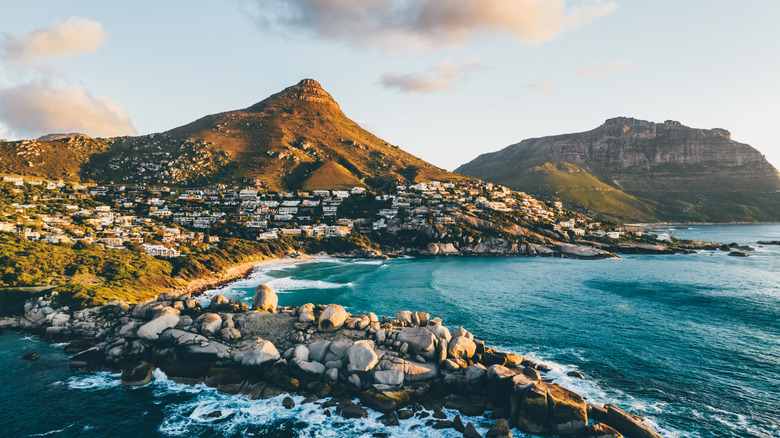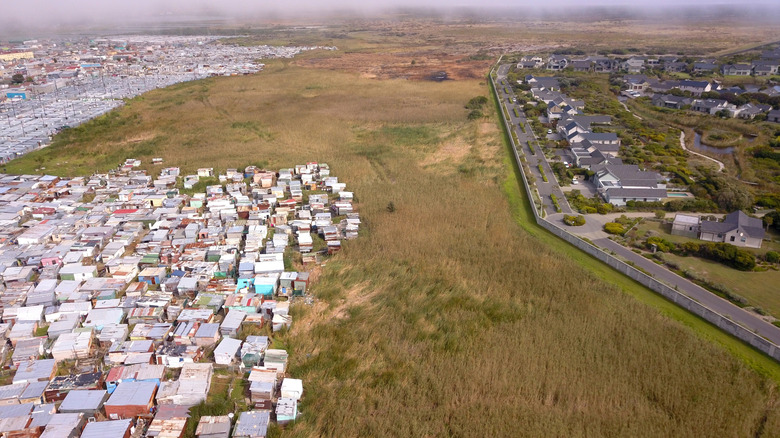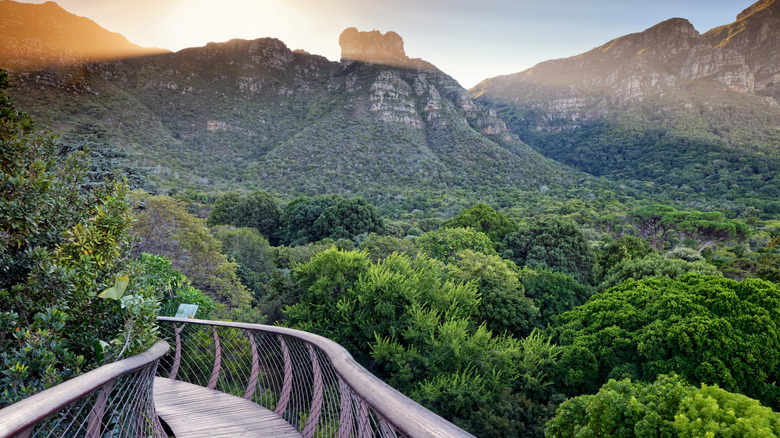One Of The World's 'Most Desirable Tourist Destinations' In 2025 Also Ranks Among The Most Dangerous
No country is perfect, and each matches its own bucket-list-able draws with notable downsides. But while some destinations' problems may be as simple as bad weather or poor public transport, others' highs and lows are dramatically opposed. Few countries exemplify this like South Africa. Despite being listed among the most desirable tourist spots on the planet — and one of the most tourist-friendly countries out there — the destination is subject to high levels of crime that rank as one of the more difficult places to explore.
South Africa's draws aren't new to anyone. From Cape Town's eclectic fusion of coastal living and urban culture to the wild, safari-ready plains of Kruger National Park, the country boasts more than enough once-in-a-lifetime experiences to cement its positive reputation. However, its challenges are just as well documented. Concerns, including kidnappings, violent crime, and instances of sexual assault across South Africa are enough concern for the average traveler to consider additional safety precautions when booking their trip.
But where does the line between danger and safety fall when traveling to South Africa? Do the statistics paint the whole picture, or can a balance be found where common sense and precaution prevail? Because, while there is an inherent risk in visiting this incredible place, millions still flock to the country year after year.
Is this desirable destination that dangerous?
South Africa's crime rate is extremely high, scoring a 75.4 out of 100 on the Crime Index (via World Population Review). In stark comparison, countries like Andorra and the United Arab Emirates have an index of just 12.9 and 15.6, respectively. With figures like this, choosing whether or not to visit South Africa can be daunting.
There is also no sugarcoating the facts. Cape Town — now celebrated as the world's best foodie capital — with its epic skyline, mountains, beaches, and vineyards, drew almost nine million visitors last year. Along with that, the Western Cape Government also recorded 1,068 murders in the province for the first quarter of 2025, as well as growing reports of hikers being mugged on popular trails around Table Mountain and Lions Head. Ransom-based kidnappings in cities like Johannesburg remain a concern, too.
But these statistics can be misleading to an extent. Don't misunderstand: There is a risk in traveling to South Africa, but the vast majority of serious crimes happen in poverty-stricken neighborhoods and townships, often many miles from the tourist areas. And while tourists can be exposed to these things, the vast majority of visitor-adjacent crime is petty and can be avoided with some common sense.
How to keep safe in one of the most dangerous countries in the world
Staying safe in South Africa requires a little more effort compared to other places. Specifically, like in most cities, wandering around with valuables on show is a bad idea — even in so-called "safe" neighborhoods. If you ever need to check your phone for directions, do so inside. This helps you look less like a tourist and also keeps opportunities for quick grabs to a minimum. During the day, especially in known safe areas, it's fine to walk. However, after dark, calling a car (even for short distances) is strongly advised. If you decide to do so, make sure to use Uber and share the ride details with someone you know.
It's also important to know which areas to avoid. Take some time before your trip to familiarize yourself with the names of safer neighborhoods and the more dangerous spots. Along with that, make sure to always stay aware of your surroundings, as "safe" neighborhoods can often be found next to unsafe ones. In most cases, the latter will be complete no-gos and should be avoided at all costs. If you have any doubts or feel uncomfortable heading somewhere alone, you can always book a local tour guide or join a larger group. This is recommended on hikes around Cape Town now, too.
Finally, remember that South Africa is popular for a reason. And even though the country might have safety challenges to deal with, there's always hope. For instance, take Comuna 13 in Colombia, which went from being one of the most dangerous neighborhoods in South America to becoming an artsy tourist hub — a shining example of how things can change.


